What is gold electroplate flatware?
You want the timeless elegance of gold flatware but fear the high cost. You see affordable "electroplated" options, but the name sounds confusing, and you worry it's just a cheap imitation.
Gold electroplate flatware is cutlery made from a strong base metal like stainless steel, which is then coated with a thin layer of real gold. This process uses an electric current to create an affordable yet luxurious finish.
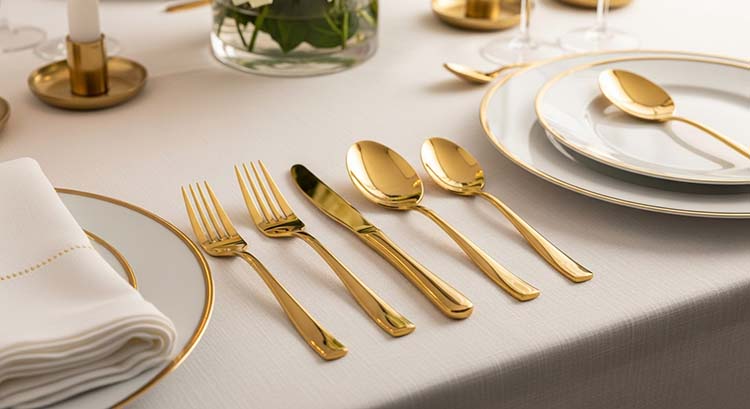
The first time I discussed a large order for an events company with Jacky, a seasoned buyer, he pointed to a gold sample and asked, "Linc, what is 'electroplate' really? Is this just going to flake off after one wedding?" It's a great question, and I hear it all the time. People see the attractive price but are suspicious of the quality. They're right to be cautious because the term represents a specific kind of product designed for a specific purpose. It's not solid gold, but it's not gold-colored paint either. Understanding what it is, and what it isn't, is the key to knowing if it's the right choice for you.
Is gold electroplate silverware worth anything?
You found an old box of gold electroplated cutlery. You wonder if you've discovered a hidden treasure, thinking the gold might have a high resale or melt-down value.
Gold electroplate flatware has very little intrinsic monetary value. The layer of gold is so thin that it's not worth extracting. Its real value is decorative, offering the expensive look of solid gold for special occasions at an affordable price.
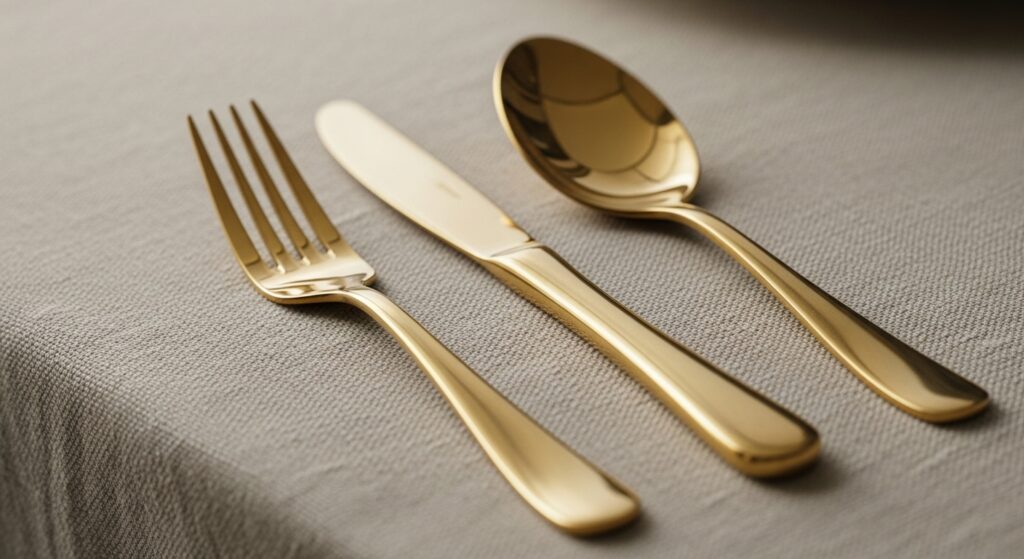
I always have to be very clear with my clients about this point to set the right expectations. The worth of gold electroplate flatware is in its appearance, not its material content. The layer of gold is measured in microns, which are millionths of a meter. It’s an incredibly small amount. The cost to chemically strip this tiny amount of gold from the base metal would be far more than the recovered gold is actually worth. Therefore, it has almost no scrap value. Its value comes from its function: it allows you to set a stunning, luxurious table for a special event or holiday dinner without spending thousands on solid gold. A complete, well-maintained set from a good brand might find a buyer on the second-hand market, but it should be purchased for its beauty and use, not as a financial investment.
| Value Type | Solid Gold Flatware | Gold Electroplate Flatware |
|---|---|---|
| Intrinsic (Melt) Value | High | Negligible |
| Decorative Value | Very High | High |
| Usability Value | High (but very soft) | High (with proper care) |
Is gold electroplate real gold?
The word "electroplate" sounds technical and maybe a little artificial. You're suspicious that it's just a fancy term for gold-colored paint, making you question the product's authenticity and quality.
Yes, the coating on gold electroplate flatware is 100% real gold. The process uses particles of actual gold, often 14k, 18k, or 24k karat, which are bonded to the steel surface with an electric current. It's not paint.
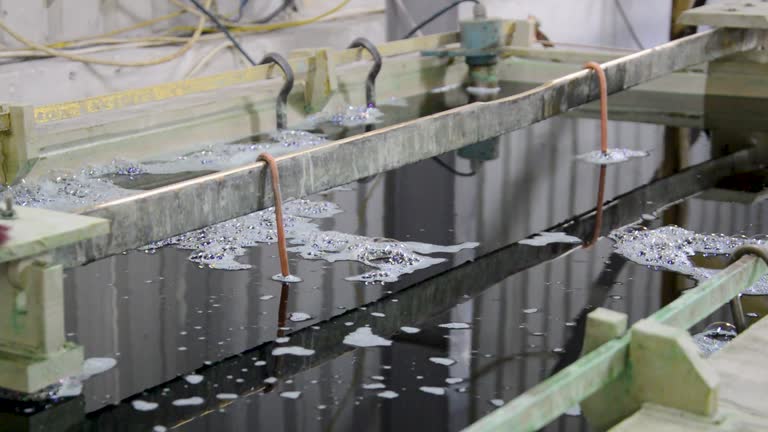
This is a key point of quality that separates it from cheap imitations. In our factory, the process is quite scientific. We start with polished stainless steel cutlery and place it in a liquid bath that contains dissolved gold salts. This is our electrolyte solution1. We then pass a low-voltage electric current through this bath. This current causes the positively charged gold ions in the solution to travel and permanently bond to the negatively charged surface of the flatware. The result is a thin, consistent, and beautiful layer of real gold. The purity of the gold used affects the final color and durability of the finish.
- 24k Gold: This is pure gold. It provides the richest, most classic yellow color but is also the softest.
- 18k Gold: This is 75% pure gold mixed with other metals. It offers a great balance of rich color and improved durability.
- 14k Gold: At 58.3% pure gold, this is more durable still, with a slightly lighter gold hue.
So, while the layer is thin, it is undeniably real gold.
Does gold electroplating wear off?
You want to buy that beautiful gold set, but you have a nagging fear. You imagine it looking patchy and worn after just a few uses, revealing the steel underneath and ruining the elegant effect.
Yes, absolutely. Gold electroplating is a surface coating that will eventually wear off with use. Friction from eating, abrasive cleaners, and the high heat and harsh detergents in a dishwasher will dramatically accelerate this process and shorten its lifespan.
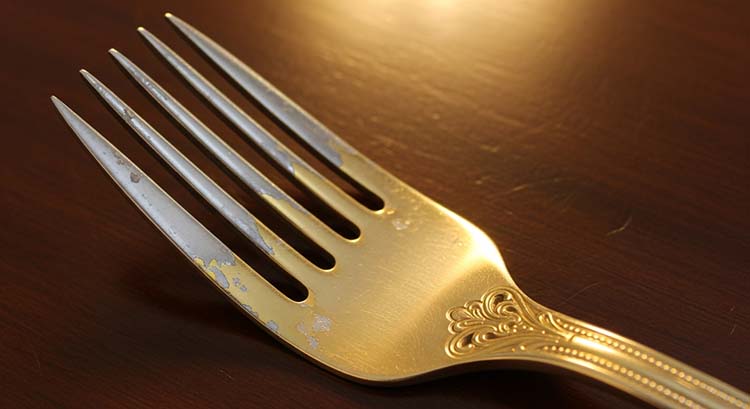
The durability of electroplating is the most important factor to understand before buying. Because gold itself is a relatively soft metal, and the plated layer is extremely thin, it is susceptible to wear. Think of it like the finish on a piece of furniture. It looks great, but you have to protect it. The main enemies of a gold-plated finish are friction and abrasion. This happens when the cutlery rubs against ceramic plates, when you use the abrasive side of a sponge, or when utensils knock against each other in a sink or dishwasher. The thickness of the original plating makes a huge difference—a higher-quality, thicker plating might last for years with proper care, while a cheap, thin "flash plating" could show wear after only a few uses. To maximize its life, you must treat it gently. This means hand-washing with a soft cloth and mild soap, drying it immediately, and storing it where it won't get scratched.
What is the difference between gold plated and electroplated?
You see some flatware sets labeled "gold plated" and others as "gold electroplated." The different terms are confusing and you're not sure if one is better than the other, or if it's just marketing.
In the flatware industry, these two terms nearly always mean the same thing. "Electroplating" is the specific technical name for the process, while "gold-plated" is a more common, general term that consumers are familiar with. You should treat both as a delicate finish.
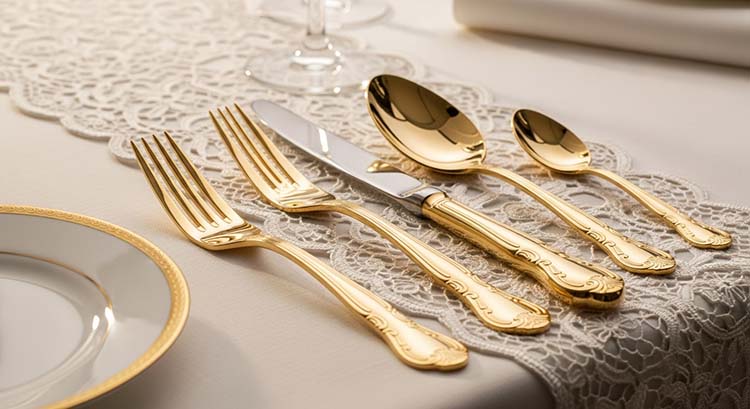
This is a classic case of industry jargon versus consumer language. As a manufacturer, I would describe the product based on the specific process we use: electroplating. But for marketing purposes, "gold-plated2" is simpler and more widely understood. Technically, "plating" is a broad category for coating one metal with another. "Electroplating" is just one specific method within that category—the one that uses electricity. Since this electrical process creates the most durable and even bond for this application, it's the standard for almost all quality gold-finished flatware. So, while a terminologist could argue the fine points, the practical reality for a buyer is that there is no meaningful difference. My advice is to ignore the naming distinction and instead ask more important questions: Is it hand-wash only? What is the base metal? A "hand-wash only" instruction is your clearest signal that you are dealing with this type of delicate, traditional plated finish.
Conclusion
Gold electroplate flatware offers the luxurious look of real gold for an affordable price. While its gold value is minimal and it requires gentle care, it is the perfect choice for elegant dining.
